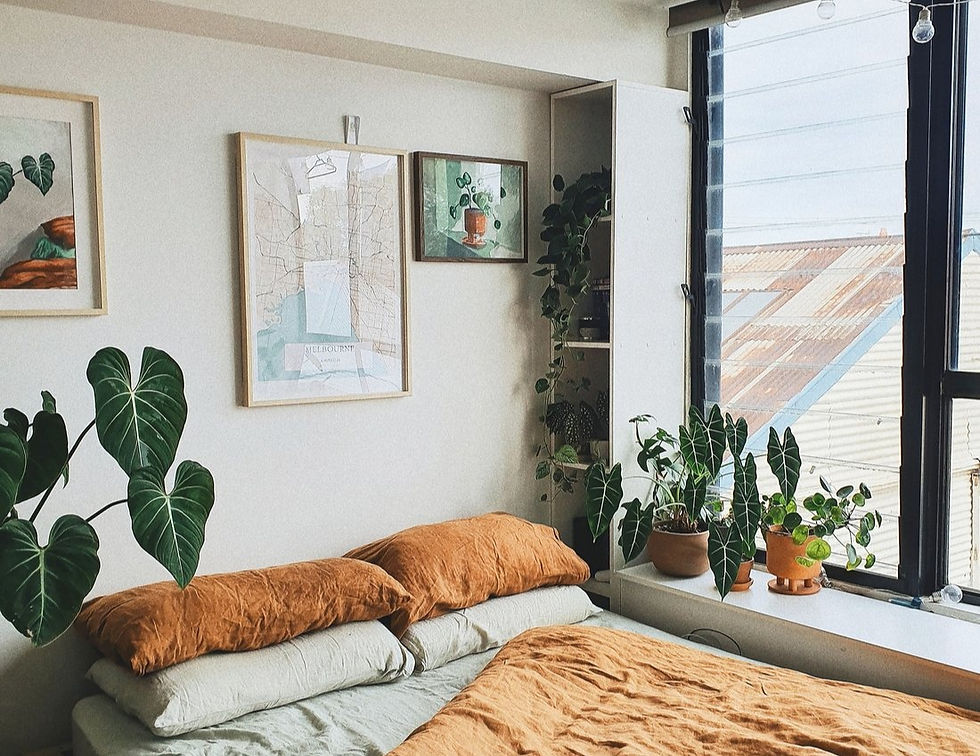Buying houseplants: How to choose the right one
- Harleigh Reimer
- Jun 21, 2021
- 3 min read
Updated: Aug 19, 2024
It is crucial to understand the environmental conditions of the space you’re planning to put your plants in. A plant can struggle a lot if your environment is not suitable for it, even if it is a relatively ‘easy’ plant to care for. For example, you may think next to your window will be perfect for your calathea because it gets terrific morning light. But if you head off to work at 9, do you know how the sun tracks for the rest of the day? Maybe some direct sunlight comes through that window and midday and could burn the leaves? Or it could get a strong wind through the door and dry them out too much?
Environmental conditions can be divided into three categories:
Light (how much natural light does the plant require)
Water (how often do you need to water it)
Humidity (does it like to be moist or dry?)
So let's break these down!
Light
Low light, direct sun, indirect bright light…. What’s it all mean?
This is one of my best analogies to help decipher bright natural light: Could you successfully pluck your eyebrows in this room without having to switch on a light? If yes, you have good natural light. If you’re struggling, you have medium or low natural light.
Here’s a few pics to help too:
Direct sunlight:
Indirect, bright natural light:


Medium natural light:

Low light:

No natural light:


Water
Some plants like their soil to be moist at all times (such as ferns), where as others like to dry completely between watering (ie peperomias). This is why having a ‘watering day’ isn’t ideal - it’s important that you learn what your plant likes adjust your watering accordingly. Watch how your plant reacts when it is thirsty (ie droopy leaves) and use this as a bit of a guide for when to water. External factors like weather can also affect your plant so you should be checking on them regularly (ie cold winter winds can dry out the soil quicker than when it’s summer stormy weather).
There is no one-size / one-day fits all watering schedule, so take the time to interact with your plants and learn what they need (which is half the fun of being a plant parent!).
Humidity
Some plants are very fussy when it comes to their humidity levels and require special conditions (Calatheas I’m looking at you). This means investing in a greenhouse or humidifier for the cooler months, regular misting, pebble trays or keeping them in the bathroom. Humidity can be tricky to control so if you are just beginning your plant journey or looking for something low maintenance, try to choose a plant that isn’t too phased by humidity levels.
Okay... so what does it all mean for me?
The most important thing is to first understand the plant that you’re hoping to purchase.
What conditions does it thrive best in? (just ask us!)
Is your space/environment suitable for this plant?
If not, are you willing and able to provide such conditions for the plant? (i.e. changing your routine; adding a humidifier; investing in grow lights)
Sometimes it can be best to shift your buying habits
If you have a shelf or corner where you want to put a plant, try to purchase one that is suited for that space. Try to avoid buying a plant simply because it is pretty and trying to force it to like that space. Just like us, plants thrive in an environment they respond well to!







Comments